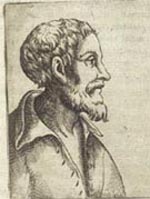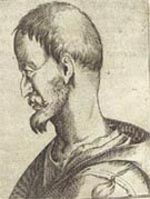|
François Delaporte
La Fabrique des mimiques/ The production of facial expressions
We will start with a brief description of Lavater’s system, which was based not on a catalogue of symbolic animals, but on the physical features that reflect character. A subject’s physical appearance reflects his or her underlying nature. The various parts of the face are mirrors that represent images of invisible qualities. Lavater was not primarily interested in physiognomic movements but in the underlying character reflected by these movements. The study of moving physiognomy, that Lavater called pathognomony, constitutes the study of moving character.
From the beginning of the 19th century until the 1850s, anatomists tried to establish a link between muscle movements and expression of passions. However, Moreau de la Sarthe, followed by Cruveilhier, were faced with an insurmountable difficulty. Considering facial muscles to resemble large muscle bands prevented any discussion of their functions, hence the prestige attributed to Lavater’s work. The analyses conducted by Moreau de la Sarthe and Cruveilhier directly reflect this prestige, as they fluctuated between a description of the effects of passions (expressive portraits) and the ancient semiology of diseases of the soul (opposing expansive and oppressive passions).
To understand how Duchenne provided a description of the physiology of emotions, we must start with the invention of the electric scalpel. This tool allowed Duchenne to describe, for the first time in the history of human anatomy, the structure of the various facial muscles. He was then able to link the knowledge of muscle actions to that of facial expressions. Application of the new processes of localized electrical stimulation and photography played a considerable role in this scientific revolution. Isolation of superficial facial muscles and description of emotions based on a grammar of signs account for the expressive acts observed on the face. We can safely say that Duchenne’s work made Lavater’s system obsolete.
L’art de connaître les hommes par la physionomie probably exerted an influence throughout the first half of the 19th century. This was inevitable in view of the perception of superficial muscles as a muscle plane moulded onto the bones. This perception prevented any physiological analysis of physiognomic movements, leading to the idea that the face could be marked by either innate or acquired characters. These forms of identification of passions allowed their recognition, but did not help to elucidate their mechanisms, as the prerequisite remained the essence of passions. In other words, passions used a system of signs as characteristic symptoms of their essence. Finally, we will examine several errors of interpretation in the work of Cruveilhier that reveal the persistent confusion concerning facial expressions in 1850, i.e. shortly before Duchenne and Darwin established facial expression as a bodily function.
Go back to Physiognony from Lavater to the Great War
|
|
|
|



